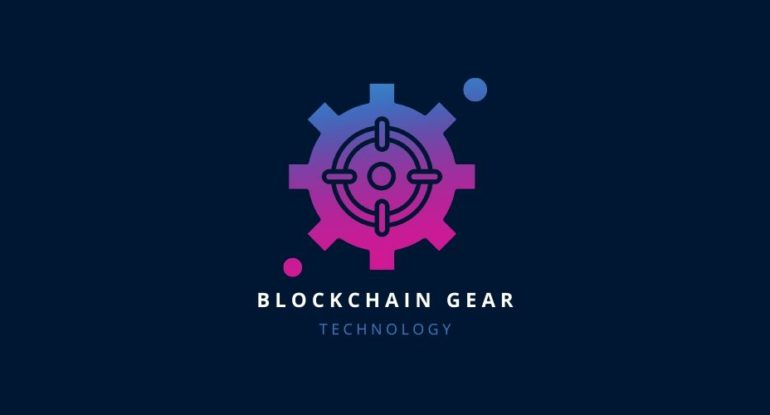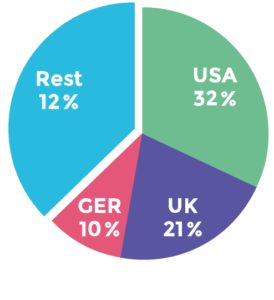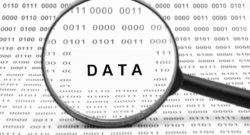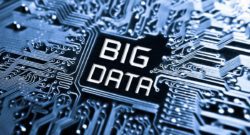Top 5 Use Cases Of Big Data Applications For Blockchain

A blockchain is a decentralized, peer-to-peer network of computers that maintains and verifies a public ledger of transactions using a consensus mechanism to confirm data. Here are some essential characteristics of blockchains that distinguish them from other technologies and that you should be aware of. At least five separate application areas exist where blockchain data may be useful to data scientists in general.
The list of 5 Cases Of Big Data Applications For Blockchain.
- Establishing Trust (Data Integrity)
The data recorded on a blockchain must be verified to ensure its high quality. This makes the data trustworthy and credible. All blockchain network activity and transactions can be monitored, which gives it an extra instrument for maintaining transparency.
In the previous year, Lenovo presented the use of blockchain technology that could detect fraudulent documents and forms. Industry leaders in the PC sector used blockchain technology to validate the legitimacy of tangible documents with digital signatures. Computers are responsible for processing digital signatures, and the document’s authenticity is verified using a blockchain-based record.
Data integrity is often protected when the origin and transactions associated with a data block are recorded on the blockchain and automatically verified (or certified) before its use. This guarantees that the data cannot be modified or distorted.
According to Harvard Business Review, health data could be a focus for future application of blockchain. Big data is perhaps the most powerful asset we have in solving big problems these days. We need it to track and trace infection, manage healthcare talent and medical supply…
— DREP Foundation (@FoundationDrep) June 15, 2020
2. Preventing Destructive Actions
Because blockchain depends on consensus to confirm transactions, it is theoretically impossible for a single node to compromise the whole network. If a network node (or unit) begins to behave irregularly, it is easy to detect it and remove it from the network.
Due to the vastness of the network, it is almost impossible for a single organisation to generate sufficient processing power to alter the validation criteria and let undesired data into the system. Due to the scattered nature of the network, this is the case. To amend the rules that govern the blockchain, a majority of nodes on the blockchain must reach an agreement. A single evil person cannot achieve this objective on their own.
Also, read – Top 7 Crypto Global Icons Of All Time
3. Making Predictions (Predictive Analysis)
Similarly to other types of data, blockchain data may be analysed to give important insights into the behaviours and patterns of users, and can thus be used to forecast the outcomes of future events. In addition, blockchain may provide data that has been prepared and is based on data obtained from individuals or certain devices.
Data scientists utilise predictive analysis to determine with a high degree of accuracy the effect of social events associated with organisations such as consumer preferences, customer lifetime value, dynamic pricing, and churn rates. This is achieved by basing their research on massive data sets. This, however, is not limited to commercial insights; with the proper data analysis, almost any event can be predicted, whether it be social sentiments or financial signals.
In addition, due to the decentralised nature of blockchain technology and the tremendous processing capacity that can be accessed via it, data scientists working for smaller organisations can conduct big predictive analytic projects. By using the processing power of several thousand computers connected to a blockchain network as a cloud service, these data scientists can examine social implications on a scale that would have been impossible otherwise.

4. Real-Time Data Analysis
Thanks to blockchain technology, which has been shown by several banking and payment systems, cross-border transactions are now possible in real time. A lot of banks and fintech start-ups are already investigating blockchain technology because it allows the speedy — in fact, real-time — settlement of large amounts regardless of geographical borders.
Similarly, firms that need large-scale real-time data analysis may be able to achieve this objective by using a blockchain-enabled system. Banks and other organisations may now monitor data changes in real time, allowing them to make quicker decisions. This might include the blocking of possibly possible fraudulent transactions.

5. Manage Data Exchange
In this manner, the outcomes of data investigations might be recorded and stored in a blockchain, a kind of distributed ledger. Using this strategy, project teams may avoid duplicating the data analysis that has already been performed by other teams or reusing data that has already been used. Using a blockchain platform may also help data scientists monetize their efforts, most likely via the trade of network-stored analytical findings.
Conclusion
As said, blockchain is still in its infancy, however, this may not seem to be the case due to the amount of attention the technology has garnered in a short period. It is fair to expect that as the technology progresses and innovations are produced in its proximity, more particular use cases will be identified and studied. One subject that will benefit from this trend is data science.
However, a few worries have been raised about its influence on data science, especially big data, which requires the administration of very vast volumes of data. There is concern that the use of blockchain technology in this setting would be prohibitively expensive. This is because storing data on a blockchain is more expensive than using traditional techniques. Compared to the massive volumes of data created every second for big data and other data processing tasks, blocks deal with comparatively small amounts of data.
The method in which blockchain adapts to meet these problems and disrupts the data science industry will be particularly fascinating to see as it evolves. As we have seen, technology has the potential to have a big influence on how we manage and use data.





























































